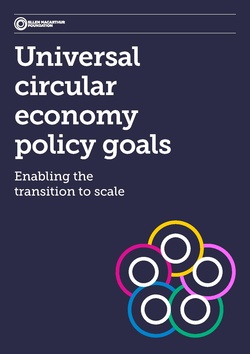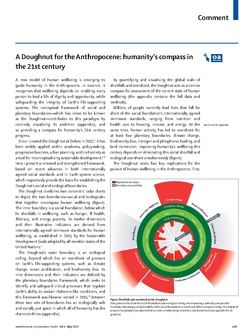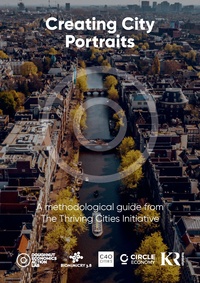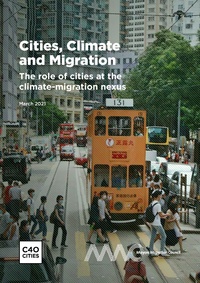Measurement
| Wellbeing | ||||||
|---|---|---|---|---|---|---|
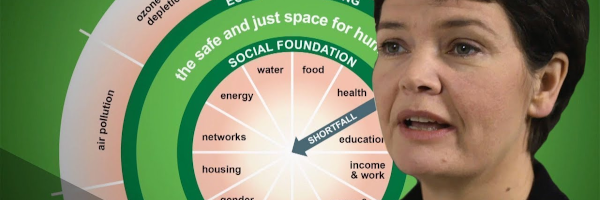
| ||||||
| Sectors | Wellbeing | |||||
| Contact | Stan Curtis | |||||
| Topics | ||||||
Press
| ||||||
- Authors
Wellbeing refers to a state of being happy, healthy, and comfortable in one's life. It encompasses a range of physical, mental, and emotional factors, and can be influenced by a variety of factors such as genetics, environment, and personal choices.
Physical well-being includes elements such as having enough energy, feeling good in one's body, and being free from illness or injury. Mental well-being includes elements such as having a positive outlook, feeling able to cope with stress, and having a sense of purpose or meaning in life. Emotional well-being includes elements such as feeling content and satisfied, and having supportive and positive relationships.
Overall, well-being is a multi-faceted concept that includes many different aspects of a person's life. It can be influenced by a variety of factors including the physical environment, social support, work-life balance, and personal choices. People can work on improving their well-being by making healthy choices, staying active and engaged, and by seeking support when needed.
Measurement
Gross Domestic Product (GDP) is a measure of a country's economic activity and performance. It is calculated by adding up the value of all goods and services produced within a country in a given period of time, usually a year.
- Strengths of GDP include
- It is widely used and understood, making it easy to compare economic performance between countries.
- It provides a single number that can be used as an overall indicator of a country's economic health.
- Weaknesses of GDP include
- It only measures economic activity that is monetized, and does not take into account non-market activities such as unpaid work (e.g. caring for children or elderly) or black market activities.
- It does not measure the distribution of income or the well-being of citizens.
- It does not account for negative externalities such as pollution or resource depletion.
There are a number of efforts to address these weaknesses1.
"In order to allow analysis of a wide range of ethical decision problems, any version of a coherent individualistic ethical decision theory requires some ideal index indicating the ethical value of each individual’s life. It seems reasonable that this index should be related to wellbeing. In fact the values involved in determining well-being might still form part of an ideal value index, but only after they have been suitably repackaged. But it would appear that a satisfactory ethical value index must transcend any of the commonly accepted notions of wellbeing". Peter J. Hammond, Department of Economics, Stanford University
CEOs for Cities
The 2006 report titled 'City Vitals: New Measures of Success for Cities'2 by economist Joseph Cortright, in partnership with CEOs for Cities, outlines the key areas that cities need to excel in today, along with a set of metrics to track their progress. The report covers the top 50 metropolitan areas in the U.S., evaluating them based on 20 measures, including Metro Performance (economic indicators) and Core Vitality (strength of the urban core).
In 2012, CEOs for Cities published an updated version of the City Vitals3 research, which expanded its scope to include the 51 largest metro regions in the United States. The updated report provides cities with tools to enhance their competitiveness and vibrancy, using a wide range of metrics, from traditional measures like college attainment to more unique indicators such as the "weirdness index" or Internet search variety.
Circular Economy
The circular economy4 is an economic model that aims to keep resources in use for as long as possible and to minimize waste and pollution. It is based on the principles of designing out waste and pollution, keeping products and materials in use, and regenerating natural systems. The circular economy is in contrast to the traditional linear economy, which is based on the “take-make-use-dispose” model, where resources are extracted, used to make products, consumed, and then discarded as waste.
The circular economy addresses the negative externalities of the economy by reducing the use of natural resources, decreasing waste and pollution, and increasing the efficiency of resource use. The key principles of the circular economy include:
- Designing products and systems to be easily disassembled, repaired, refurbished, and recycled
- Maximizing the use of renewable energy and minimizing the use of fossil fuels
- Using digital technologies to enable the circular economy, such as the use of digital twins, digital platforms, and blockchain to improve the tracking and management of resources
- Investing in circular business models and infrastructure, such as shared assets and circular supply chains, to improve the flow of resources
- Encouraging collaboration and co-creation across the value chain to build circular business models and infrastructure
By following these principles, the circular economy aims to create a more sustainable and resilient economic system that benefits both the environment and the economy.
Doughnut Economics
Doughnut economics is a framework developed by economist Kate Raworth that aims to balance economic, social, and environmental well-being within the boundaries of the planet56. It is based on the idea that economies should operate within the "doughnut-shaped" space between the "social foundation" and the "ecological ceiling." The social foundation represents the minimum standards of well-being that every person should have access to, such as adequate food, housing, and healthcare. The ecological ceiling represents the maximum level of environmental degradation that the planet can sustain.
Doughnut Economics addresses the weaknesses of GDP by providing a holistic view of well-being that goes beyond economic growth. It focuses on meeting the needs of all people within the means of the planet, and it takes into account the social and environmental factors that GDP does not.
Some of the ways it addresses the weaknesses of GDP include:
- It includes social foundations such as, living wages, basic health care, education and access to political voice
- It includes ecological boundaries such as, air quality, water and biodiversity, as well as climate change
- It emphasizes on the need of regenerative economy,
- It calls for a shift in the economic systems to prioritize the well-being of people and the planet over economic growth
Doughnut economics is seen as a way to create a more sustainable and equitable economic system. It highlights the need to rethink our economic goals and to prioritize the well-being of people and the planet over economic growth.
Holistic Key Performance Indicators
Cities and communities worldwide are increasingly turning to advanced technologies to meet their strategic economic, environmental, safety, and other goals, with the overall goal of improving the quality of life for their occupants. This document presents research findings and scientific work that advance the development and progression of smart city and community measurement methodology.
The term ‘smart,’ as used in the phrase ‘smart cities,’ is defined here as the efficient use of digital technologies to provide prioritized services and benefits to meet community goals, such as economic vitality, equity, resilience, sustainability, or quality of life. Without reliable measurement methods for ‘smart,’ there is a gap in the ability to answer questions such as ‘how smart is my smart city plan,’ or ‘how can my community strategy be made smarter?’ The purpose of this report is to address this gap.
The use of Key Performance Indicators (KPIs) in cities and communities is a common practice, with wellknown generic indicators for evaluating and measuring today’s smart city ecosystems. However, many conventional KPI approaches are limited by the following.
- A focus on technology-linked or sector/domain-specific outputs limits measurement of broader indirect benefits essential to accurate assessment of impact and return on investment.
- The lack of a reliable means for measuring real return on investment limits the development of mature smart city business models.
- The application of generic KPI objectives without accounting for unique community characteristics limits the ability to benefit from others’ experiences and adapt solutions from other settings.
- Confining implementation to technology or infrastructure silos without assessing interoperability and scalability limits the ability to evaluate efficient multi-sector, multi-purpose technologies.
- Lack of a reliable means for accounting for local conditions limits realistic evaluation of the technology readiness or maturity level of a city or community in comparison to others.
The Holistic KPI (H-KPI) Framework7 builds on conventional KPI methods for a more holistic approach with integrated KPIs that facilitate self-assessment, strategic planning, and implementation. The Framework provides a measurement means that accounts for unique characteristics such as the differing needs and capabilities of varying districts and neighborhoods; the need to normalize for variations in population and economic scale; and the reuse of previously deployed technologies, including available data sources and types, platforms for data acquisition and distribution, and installed sensors and actuators.
References
- ^ Government of Iceland. "Indicators for Measuring Well-being 2019". https://www.government.is/lisalib/getfile.aspx?itemid=fc981010-da09-11e9-944d-005056bc4d74, .
- ^ Joseph Cortright. "City Vitals: New Measures of Success for Cities". CEOs for Cities, 2006, .
- ^ Joseph Cortright. "City Vitals 2.0".
 , CEOs for Cities, 2012, .
, CEOs for Cities, 2012, . - ^ Ellen MacArthur Foundation,. "What is a Circular Economy?". https://www.ellenmacarthurfoundation.org/circular-economy/concept, .
- ^ Florian Ross. "Kate Raworth - Doughnut Economics: Seven Ways to Think Like a 21st Century Economist (2017)".
 , Regional and Business Studies, 2019, Vol = 11, Issue = 2, DOI = 10.33568/rbs.2409.
, Regional and Business Studies, 2019, Vol = 11, Issue = 2, DOI = 10.33568/rbs.2409. - ^ Kate Raworth. "Why it's time for Doughnut Economics". Wiley, 2017, Vol = 24, Issue = 3, pp. 216-222, DOI = 10.1111/newe.12058.
- ^ David Wollman. "Smart Cities and Communities: A Key Performance Indicators Framework".
 , National Institute of Standards and Technology, 2022, DOI = 10.6028/nist.sp.1900-206-upd1.
, National Institute of Standards and Technology, 2022, DOI = 10.6028/nist.sp.1900-206-upd1.



